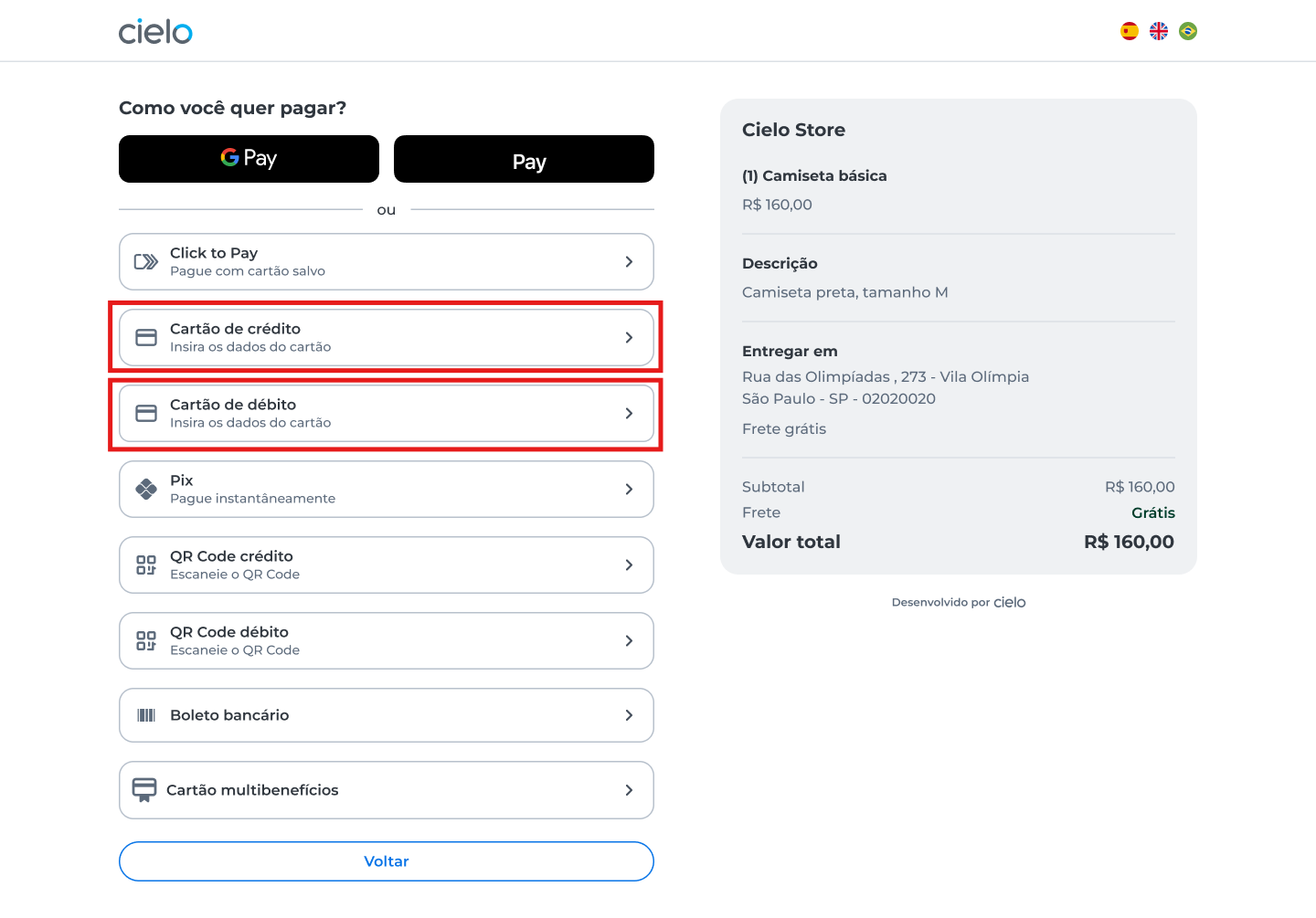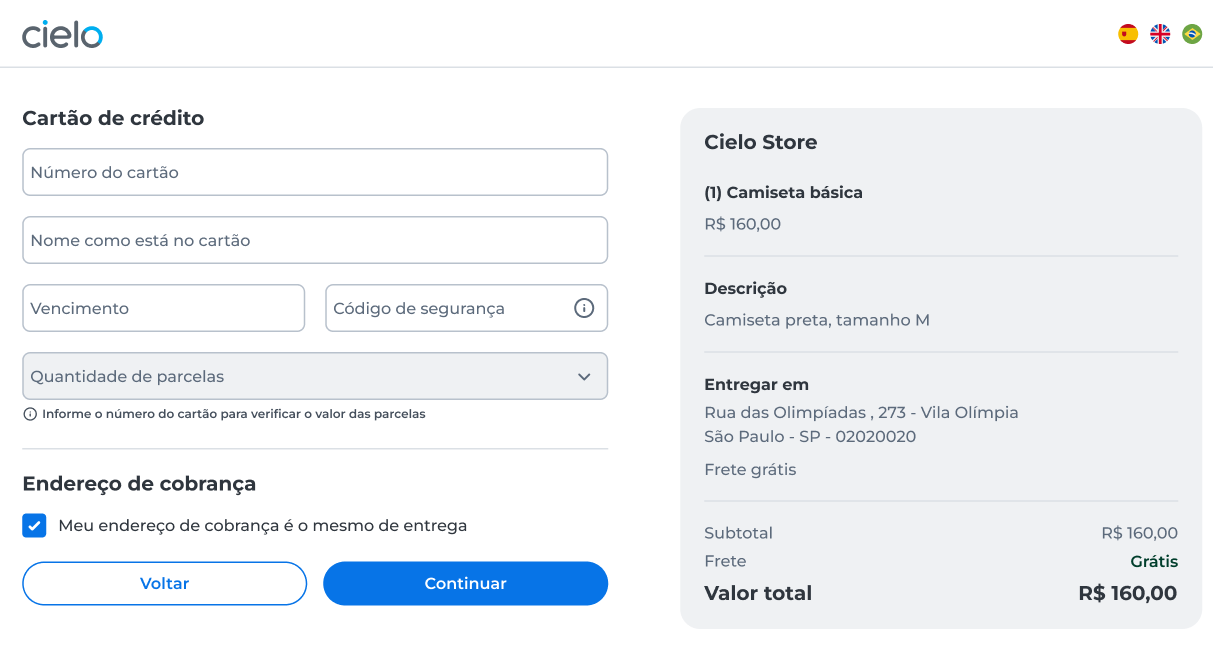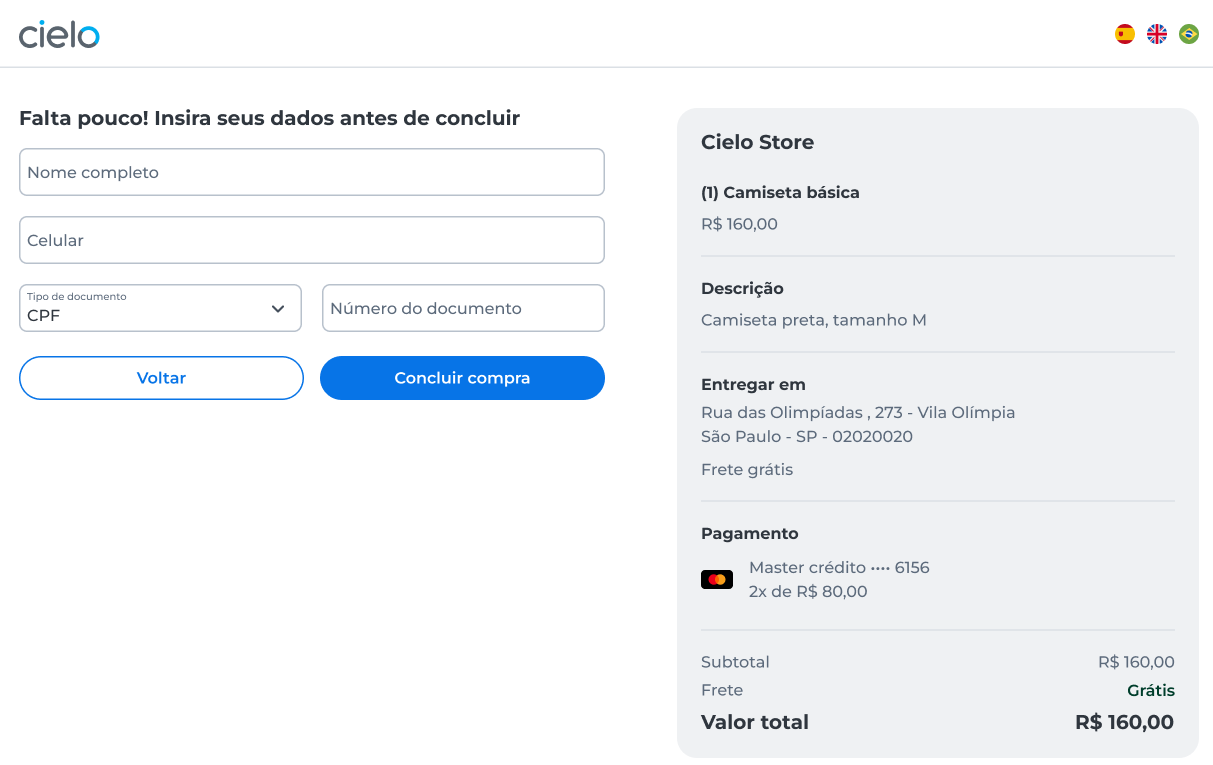Credit and debit cards
The card payment journey may vary depending on the issuer and the merchant configuration. In some cases, the process is straightforward; in others, an additional 3DS authentication step is required to ensure greater security.
3DS (3-D Secure) is a protocol that verifies whether the shopper is the cardholder. This authentication may occur automatically or require an action from the shopper, such as entering a code sent via the bank app, SMS, etc.
For debit cards, 3DS is mandatory.
For credit cards, it is optional.
When there is a challenge, the issuing bank may request additional data to validate the shopper's identity.
Learn more about the 3DS protocol in the documentation.
Below, you’ll see the two possible scenarios: with and without 3DS authentication challenge.
Without 3DS authentication challenge
See below an example of how the payment screens look for credit or debit card payments without the 3DS authentication challenge in the desktop payment journey of the shopper, in a successful scenario (approved payment).
- The shopper chooses to pay with a credit or debit card:

- When selecting credit or debit card, the shopper enters the card details

To edit the billing address, the shopper must uncheck the option “My billing address is the same as my shipping address” and fill in the ZIP code of the new address.
- The shopper fills in their personal details, reviews the order, and completes the purchase:

- The purchase is finalized and the order summary screen is displayed.

With 3DS authentication challenge
The credit or debit card payment journey may include an additional 3DS authentication step, depending on the card issuer and the merchant configuration
Important:
TThe following images are illustrative and represent common examples of how banks usually present the 3DS authentication challenge. The appearance may vary depending on the card issuer.
- After entering the card and personal details, the shopper is redirected to the issuer’s authentication screen, where the authentication is performed (e.g., code entry, facial recognition, etc.);

- After successful authentication, the purchase is completed and the order summary screen is displayed.

Examples of 3DS authentication errors
During the 3DS authentication step, failures may occur that prevent the purchase from being completed. Below are the main examples:
- Authentication error.
This error may occur due to specific rules of the bank or card brand.

- Card not eligible for authentication.
The card is not eligible for 3DS authentication.

- An unexpected error occurred during authentication.
Technical error or instability.

- Card brand does not support authentication.
The card brand used is not compatible with 3DS authentication

Recommended solution:
The merchant should advise the shopper to try again with another card or choose a different payment method available in the merchant.
Updated 10 days ago